Date With the Devil (36 page)
Read Date With the Devil Online
Authors: Don Lasseter

“On count two ... assault with a firearm, the court selects the middle term of three years. This is a determinate term. Upon its completion, he is to serve the indeterminate term of forty years to life.”
Next the judge gave Mahler credit for the time he had already served since being arrested in June 2007. In addition, Mahler was ordered to pay a restitution fee of $10,000, plus a $5,000 “State Court Construction penalty.” At the expiration of his “period of incarceration,” forty years, he would be eligible for parole in his mideighties.
Judge Wesley also advised Mahler that if he wished to appeal, he must file a written notice within sixty days. He concluded with, “The defendant is remanded without bail to the custody of the Los Angeles County Sheriff's Department of Corrections, forthwith.”
Â
Â
Later discussing the case, Vicki Bynum acknowledged that she cried when Robin Henson said, “This is my sister.”
“I was very touched by the victim impact words from Robin,” Bynum said. “I've been to a lot of murder trials, but this one got to me. We tend to become a little cynical in this business, but sometimes cases like this adjust the perspective for me. I remember hearing a judge once say the criminal justice system is exactly thatâjustice for the criminal. The victims often take a back burner to the system. At the end of it all, we did this for Kristin, because she was a person.”
A
CKNOWLEGMENTS
CKNOWLEGMENTS
From the moment a lightbulb flashes on above a nonfiction author's head with the nucleus of an idea for a new book, the project becomes a matter of teamwork. Each member's contributions ultimately determine whether or not the idea will finally reach the hands and eyes of readers. Our championship team of regulars, draftees, and volunteers couldn't have been better.
Michaela Hamilton, editor in chief, not only opened the starting gate, but also gave us her usual warm and welcome advice.
Susan Crawford, literary agent, connected the logistical dots for us.
LAPD detectives Vicki Bynum, Wendi Berndt, and Tom Small were absolutely terrific in friendly discussions, giving us a guided tour through the iconic Hollywood Station, and coming through with inspiration.
Robin Henson, Peter Means, and Robin's twin brother, Rick, generously spoke to us about their beloved Kristin, as did her best friend, Jennifer Gootsan. They also provided photographs we desperately needed. Robin and Rick faced another devastating loss on November 9, 2010, when their mother, Marie Dionne, passed away from natural causes at age sixty-one. She sat next to the author during the trial on the day before her sixtieth birthday and shared personal memories about her family.
Bobby Grace, the prosecutor, gave us insight into the legal process and delighted us with his story of the elephant eating his jacket.
Larry Young, Mahler's defense attorney, graciously chatted during breaks at the trial.
Stacy Tipton overcame her fearful reluctance to provide essential background information.
Armine Safarian and Lea Malit-Crisostomo, assistants for Bobby Grace, filled in important blanks.
Sherry Quenga, court reporter, worked overtime to provide essential trial transcripts.
We are also grateful to the most colorful cast of characters ever to populate a true-crime book. We have changed a few of their names to protect privacy.
Â
Â
Finally, a particularly inspirational woman deserves our heartfelt acknowledgment. In the words of Ron Bowers:
“In this story of Kristin Baldwin and David Mahler, my wife, Rosemarie, proved to be incredibly valuable. I talked her into accompanying me to the desert where Kristin's body was found. She is accustomed to such adventures, but would prefer to avoid trekking through murder scenes where rattlesnakes, lizards, spiders, and coyotes might be lurking. Courageously, she joined me to explore the site near Daggett, and came up with a startling theory. We wondered how Kristin's body had wound up mostly under the low bridge. Rosie surveyed the scene, noticed the gradual slope downward, west to east, and suggested that the corpse had been dumped on the other side of the bridge. In her theory, a flash flood had moved the body to its discovered location. We are still debating it, but she deserves admiration for not only this input, but for her many years of support in dealing with horrific crimes.”
POSTSCRIPT
In September 2011, an unexpected and explosive decision in the David Mahler case changed everything. The California Court of Appeal, Second Appellate District, issued an opinion that stated:
We are compelled to reverse the murder conviction because the trial court improperly instructed the jury on felony murder... . The conviction is reversed and the matter remanded to the trial court.
We are compelled to reverse the murder conviction because the trial court improperly instructed the jury on felony murder... . The conviction is reversed and the matter remanded to the trial court.
When Ron Bowers and I heard this, we were amazed. It had been our impression that Mahler had missed the deadline for filing an appeal and that any legal maneuvering would occur sometime in the future. I contacted several members of Kristin Baldwin's family, her friends, and other individuals involved in the story to ask about their reactions to the reversal.
Robin Henson, Kristin's sister, choked back tears as she said, “I'm stunned and sick to my stomach. I just pray that justice will ultimately come about.”
Peter Means, Kristin's stepfather, stated, “I'm dumbfounded and shocked. I certainly hope a new trial takes place soon and that Kristin's killer is kept behind bars.”
Jennifer Gootsan, the close friend of both Kristin and Robin, couldn't believe it. “I'm sick, appalled, and disgusted. I can't believe so many tragic things can happen to Kristin and her loved ones. This just makes it worse.”
Dreading the specter of a new trial, or the possibility of Mahler being released, Karl Norvik said simply, “Here we go again.”
Â
Â
The court's decision made no mention of David Mahler's guilt or innocence, nor did it deny that he had shot and killed Kristin Baldwin. Instead, the three justices focused on an obscure provision in the instruction defining second-degree murder that Judge David Wesley had read to the jury before deliberations began.
The instruction is intended to define felony murder and to inform jurors that the defendant can be found guilty even if there is no evidence of malice aforethought. It points out that when the killing is accompanied by the commission of a felonyâsuch as rape, kidnapping, robbery, or assault with a firearmâthese facts can supplant the evidence of malice, allowing the jury to reach a verdict of guilt even if the killing appears to be unintentional.
As observers of Mahler's trial had seen, the evidence left no doubt that he had used a handgun, and that Kristin Baldwin had been killed. So it appeared that Mahler's waving the weapon around, and repeatedly pulling the trigger while pointing it at both Kristin and Donnie Van Develde, could be interpreted as felonious assault with a firearm. This would certainly appear to meet the definition of felony murder.
In a twenty-two-page explanation of the court's decision, Associate Justice Laurie D. Zelon disagreed. She referred to a 1969 decision by the California Supreme Court that stated:
[When] the felony merged with the homicide [it] cannot be the basis for a felony murder instruction.
[When] the felony merged with the homicide [it] cannot be the basis for a felony murder instruction.
Trial judge Wesley, regarded as one of the finest legal minds in the Los Angeles County court system, was no doubt familiar with the California Supreme Court ruling. He may have considered Mahler's pointing the weapon at Donnie Van Develde, and pulling the trigger, as a separate assault, not “merging” with the crime against Kristin Baldwin. The appellate court, however, rejected that logic.
As an experienced prosecutor, Ron Bowers was perplexed by the reversal. He noted, “Bobby Grace did not argue the issue or even mention it to the jury. The defense attorney neither discussed the rule in his arguments, nor lodged an objection to it being read to jurors.”
Regardless of any controversy, David Mahler's conviction was overturned. Several legal experts suggested that the reversal was unwarranted since the appeals court could certainly have classified the questionable jury instruction as “harmless error.”

The Los Angeles County District Attorney, along with the Superior Court, faced several options, including releasing Mahler, offering a plea bargain that would reduce the sentence but still keep him in prison for several years, or initiating a new trial.
The long, complex process began on January 5, 2012, with a “pre-trial” court hearing, indicating the District Attorney's intention to once again prosecute David Mahler for murder. Everyone involved in the case dreaded the forthcoming ordeal of endless hearings, another bruising court battle, and the possibility that a new jury could make an inexplicable decision.
Kristin Baldwin's tragic death had been marked with a staggering number of strange twists. Yet another stunning event hit the news in early March, 2012. David Mahler entered a plea of guilty to voluntary manslaughter!
For reasons known only to Mahler, he made the decision to accept a sentence of two decades in prison. Perhaps he thought it far better than facing a potential death penalty.
A collective sigh of relief came from Kristin's family and friends; from investigators and witnesses; and from two authors. Robin Henson's prayer for justice had been answered.
Â
Don Lasseter
March, 2012
March, 2012

The Mojave Desert near Dagget, California, where Allura McGehay avoided a deadly collision. Her near-miss led to an important discovery. (Courtesy Los Angeles County Superior Court)

A reckless driver who didn't bother to stop forced McGehay's pickup truck to the sandy shoulder where her tires sank into the soft earth, leaving her stuck. (Courtesy Los Angeles County Superior Court)

Sheriff's deputy with Robert LaFond and Christopher DeWitt, who stopped to help the stranded woman. (Courtesy Los Angeles County Superior Court)

While they were searching for stones to put under the pickup's tires, sunlight glinting from a gold watch caught the attention of LaFond and DeWitt. (Courtesy Los Angeles County Superior Court)

Closer inspection by the Samaritans revealed an arm protruding from the shadows under this shallow bridge. The desiccated body had been there for over two weeks. (Courtesy Los Angeles County Superior Court)

Kristin Baldwin at age five holds her kitten. She and her family moved frequently from town to town on the East Coast. (Courtesy Marie O. Dionne)
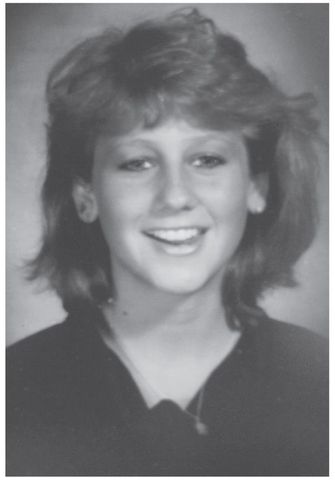
By the time Kristin reached age twelve, she attended school in California. Gregarious, athletic, witty and exuberant, she was voted Most Popular by her classmates. (Courtesy Marie O. Dionne)
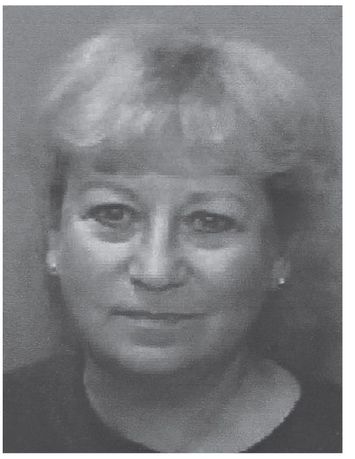
Kristin's mother, Marie, gave birth to four children during two marriages: twins Robin and Rick, Kristin, and Stephanie. A third husband took the family to the West Coast. (Driver's license photo courtesy Los Angeles County Superior Court)
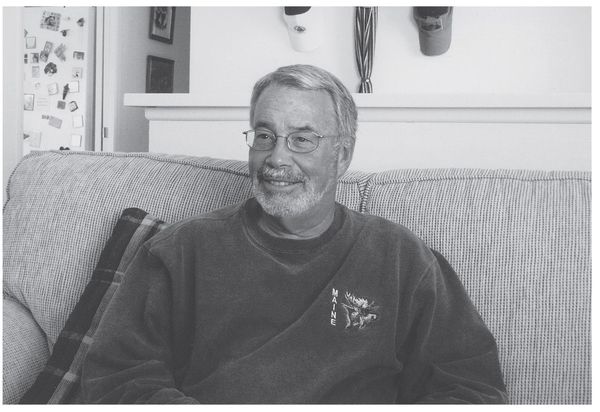
Peter Means gave Kristin and her siblings stability and a beautiful home in upscale Westlake Village. They regarded him as their true father. (Author photo)
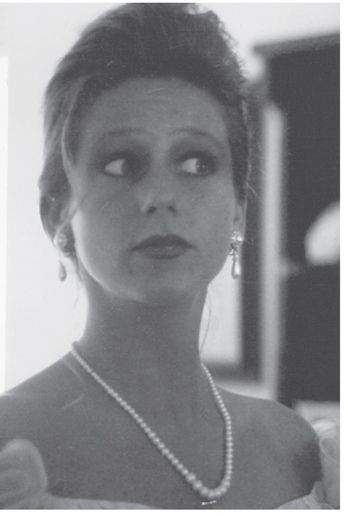
With her bubbly personality, Kristin loved to entertain kids. She thought about entering show business but never seriously pursued it. (Courtesy Jennifer Gootsan)

Jennifer Gootsan, Kristin's neighbor in Westlake Village, attended classes with Kristin from elementary school through high school. They remained lifelong friends. (Author photo)
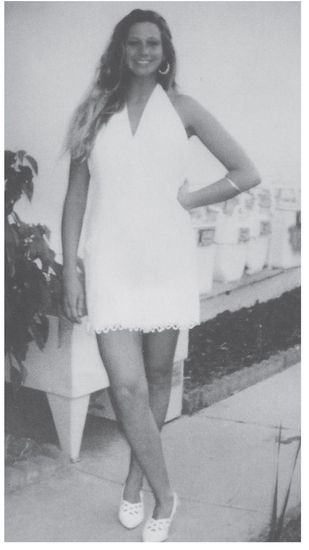
A beautiful young woman after graduation, Kristin moved to Newport Beach and then later to Hawaii, where she lived for ten years. (Courtesy Robin Henson)
Other books
More Than a Carpenter by Josh McDowell, Sean McDowell
Stealing Gold (The Logan Series Book 4) by Sally Clements
The White Lady by Grace Livingston Hill
Now and Forevermore by Charmer, Minx
Seeders: A Novel by A. J. Colucci
Their Second Chance by Taiden, Milly, Angel, April
A Sentimental Traitor by Dobbs, Michael
The World: According to Rachael by Layne Harper
Choices of the Heart by Daniels, Julia